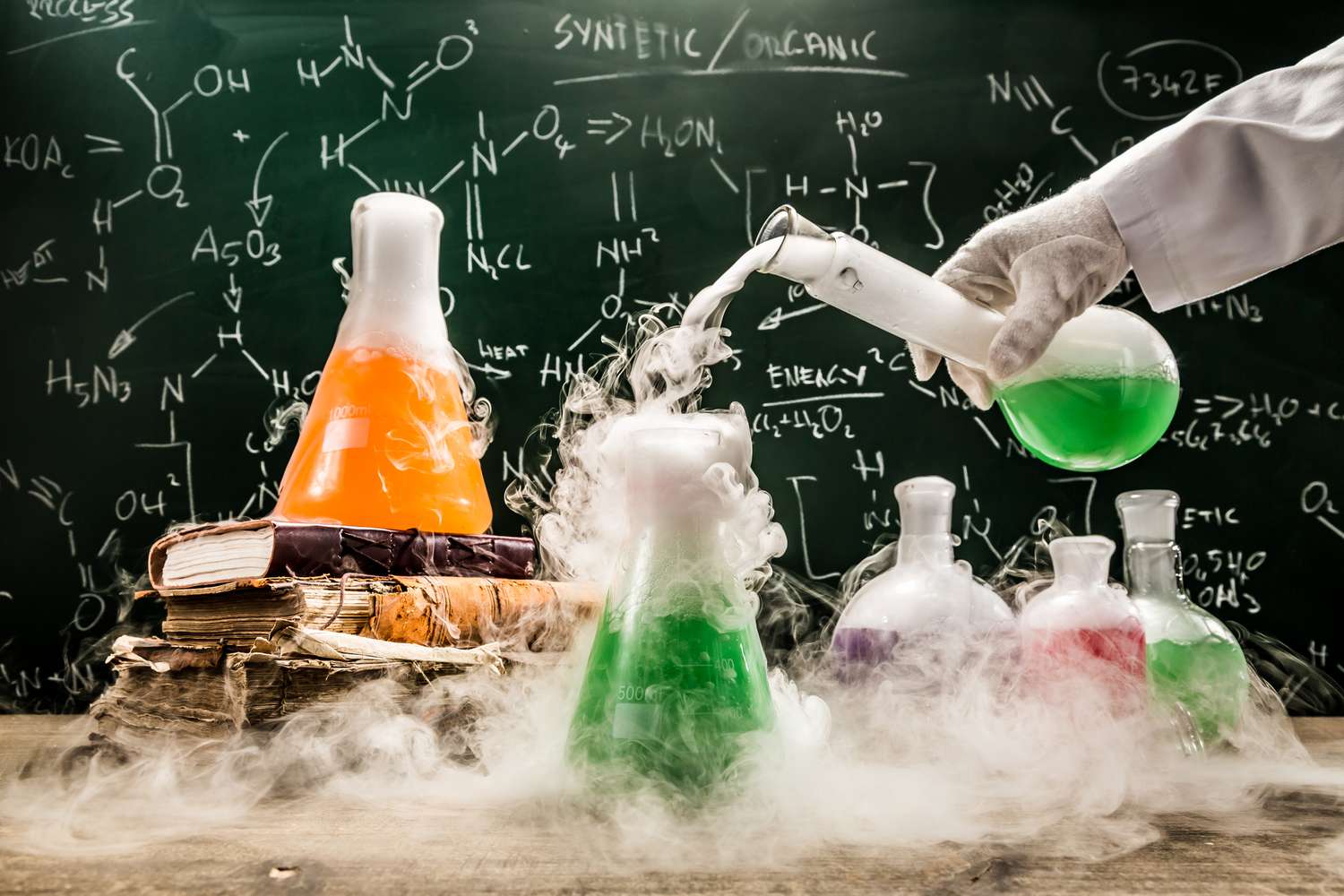Chemistry Examination Answers
Series 08
Section A (15 Marks)
Question 1(i)
Loose or floppy clothing is not allowed in the laboratory. Why?
C. It may catch fire or cause one to fall
Loose clothing presents multiple hazards in the laboratory:
- Fire hazard: Can easily contact flames or hot surfaces
- Chemical exposure: May dip into chemicals or drag through spills
- Physical hazard: Can get caught in equipment causing accidents
- Contamination risk: May spread chemicals unintentionally
Proper lab attire includes close-fitting clothing and a fastened lab coat.
Question 1(ii)
What mass of sulphuric acid (H₂SO₄) is found in 400 cm³ of its 0.1M aqueous solution?
D. 3.92g
Calculation steps:
1. Convert volume to dm³: 400 cm³ = 0.4 dm³
2. Calculate moles: Moles = Molarity × Volume = 0.1 × 0.4 = 0.04 mol
3. Determine molar mass: H₂SO₄ = (2×1) + 32 + (4×16) = 98 g/mol
4. Calculate mass: Mass = Moles × Molar mass = 0.04 × 98 = 3.92 g
Question 1(iii)
One of the isotopes of an element X has atomic number Z and a mass number A. What is the number of neutrons?
E. A – Z
Atomic structure fundamentals:
- Atomic number (Z): Number of protons in nucleus (defines the element)
- Mass number (A): Sum of protons and neutrons (nucleons)
- Neutron calculation: Neutrons = Mass number - Atomic number
Example: Carbon-14 has Z=6, A=14 → 14-6 = 8 neutrons
Question 2 - Matching
| List A | List B | Explanation |
|---|---|---|
| I. Black solid burning with reddish glow | E. Carbon | Carbon burns to form CO₂ (acidic oxide) with characteristic glow |
| II. Silvery metal with golden yellow flame | F. Sodium | Sodium's flame test shows intense yellow color, forms basic Na₂O |
| III. Yellow element with blue flame | K. Sulphur | Sulfur burns with blue flame producing SO₃ (strongly acidic) |
| IV. Shining white strip with dazzling flame | J. Magnesium | Magnesium burns with bright white light forming slightly basic MgO |
| V. Silvery metal with brick red flame | A. Calcium | Calcium's characteristic brick red flame forms white CaO |
Section B (70 Marks)
Question 3 7 marks
(a) Isoelectronic species:
i. Symbols:
O²⁻ (10e⁻), F⁻ (10e⁻), Ne (10e⁻), Na⁺ (10e⁻), Mg²⁺ (10e⁻)
ii. Electronic arrangement:
1s² 2s² 2p⁶ (Noble gas configuration of neon)
Isoelectronic species have the same number of electrons but different nuclear charges. These species achieve stability by gaining/losing electrons to attain the stable neon configuration.
(b) Sulphur dioxide oxidation:
i. Equation:
2SO₂(g) + O₂(g) ⇌ 2SO₃(g)
Conditions: V₂O₅ catalyst, 450°C, 1-2 atm pressure
ii. Industrial use:
SO₃(g) + H₂SO₄(l) → H₂S₂O₇(l) (Oleum)
H₂S₂O₇(l) + H₂O(l) → 2H₂SO₄(l)
iii. Process name: Contact Process
iv. Uses of H₂SO₄:
- Fertilizer production (ammonium sulfate, superphosphates)
- Petroleum refining (alkylation, purification)
- Metal processing (pickling, ore extraction)
- Detergent and pigment manufacturing
Question 6 7 marks
(a) Faraday's Laws of Electrolysis:
- First Law: The mass of substance liberated at an electrode during electrolysis is directly proportional to the quantity of electricity passed through the electrolyte.
m ∝ Q or m = ZQ
Where: m = mass, Q = charge, Z = electrochemical equivalent
- Second Law: When the same quantity of electricity is passed through different electrolytes, the masses of substances liberated are proportional to their chemical equivalent weights.
m₁/m₂ = E₁/E₂
Where E = equivalent weight (Molar mass/n)
(b) Electrolysis calculation:
Given: 9650 Coulombs of electricity
For Silver:
Ag⁺ + e⁻ → Ag
Moles of electrons = 9650/96500 = 0.1 mol
Moles of Ag = 0.1 mol
Mass of Ag = 0.1 × 108 = 10.8 g
For Oxygen:
4OH⁻ → O₂ + 2H₂O + 4e⁻
0.1 mol e⁻ → 0.025 mol O₂
Volume at STP = 0.025 × 22.4 = 0.56 dm³
Section C (15 Marks)
Question 13 15 marks
(a) Extraction of Sodium (Downs Process):
- Raw Materials:
- NaCl (Rock salt)
- CaCl₂ (added to lower melting point from 801°C to ~600°C)
- Electrolysis Cell:
- Steel cathode (collects sodium)
- Graphite anode (produces chlorine)
- Iron gauze separator (prevents recombination)
- Reactions:
NaCl → Na⁺ + Cl⁻ (Dissociation)
Cathode: Na⁺ + e⁻ → Na(l)
Anode: 2Cl⁻ → Cl₂(g) + 2e⁻
- Collection:
- Sodium rises (less dense than electrolyte) and is collected under kerosene
- Chlorine gas is collected as byproduct
(b) Uses of Sodium:
- Street lighting: Sodium vapor lamps (intense yellow light)
- Coolant: In nuclear reactors (excellent heat transfer)
- Organic synthesis: Wurtz reaction for alkane formation
- Chemical production: Manufacture of sodium peroxide, sodium cyanide
- Reducing agent: In extraction of titanium, zirconium


No comments
Post a Comment